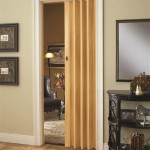Essential Aspects of Sound Proofing Interior Doors
Interior doors play a crucial role in maintaining privacy and reducing noise transmission within a building. By soundproofing these doors, you can create a more peaceful and comfortable living environment. Here are some essential aspects to consider when tackling this project.
1. Door Construction
The construction of the door itself significantly impacts its soundproofing capabilities. Solid doors made from dense materials like hardwood or MDF (medium-density fibreboard) provide better insulation than hollow doors. These solid core doors effectively block sound waves from passing through.
2. Door Seals
Air gaps around the door allow sound to leak through. To prevent this, install weatherstripping around the door frame. Choose weatherstripping that fits snugly against the door when closed. This creates an airtight seal that prevents sound from escaping.
3. Threshold Seal
The gap beneath the door can also be a significant source of noise transmission. Install a threshold seal to close this gap. Threshold seals come in various materials, such as rubber, vinyl, or metal. They effectively block sound from entering or leaving the room.
4. Acoustic Curtains
Heavy acoustic curtains can be hung over the door to provide additional sound absorption. These curtains are designed with sound-absorbing materials that help reduce noise levels. Choose curtains made from thick, tightly woven fabrics like velvet or blackout lining.
5. Acoustic Panels
Installing acoustic panels on the door surface can further enhance soundproofing. These panels are made from sound-absorbing materials, such as fiberglass or foam. By attaching them to the door, you create a barrier that prevents sound waves from reflecting or bouncing off the surface.
6. Door Sweep
A door sweep is a long, flexible brush that seals the gap between the bottom of the door and the floor. This prevents sound from leaking out or entering along the bottom edge of the door.
7. Soundproofing Blanket
For extreme noise reduction, consider installing a soundproofing blanket behind the door. These blankets are made from heavy materials that absorb sound waves. They can be hung from the door frame or attached to the back of the door.
Conclusion
Soundproofing interior doors requires a combination of techniques to effectively block sound transmission. By following these essential aspects, you can create quieter and more comfortable spaces within your home or building. Remember to consider the door construction, seals, threshold, curtains, panels, sweep, and blanket as part of your soundproofing strategy.

How To Soundproof A Door

Sound Deadening Door Soundproof Interior Manufacturer

How To Soundproof An Interior Door Home Tech Handyman Ltd

Soundproof Interior Door Asi Aeroacoustics

Acoustic Doors Studio 3d Soundproof Interior

Soundproof French Doors Silent Windows Hugo Carter

45db Sound Proof Doors Soundproof Interior Door Manufacturer

What Is A Soundproof Interior Door Manhattan

Soundproof Interior Door Sound Proofing Drum Room

45db Sound Proof Doors Soundproof Interior Door Manufacturer








